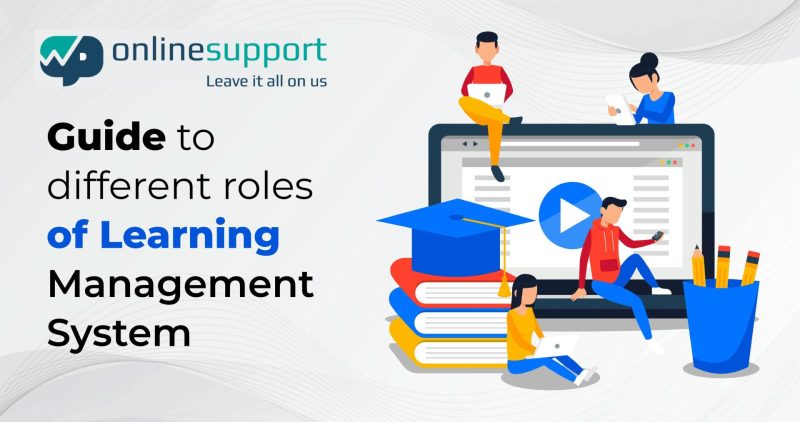In today’s digital era, Learning Management Systems (LMS) have revolutionized the way we impart and acquire knowledge. An LMS is a powerful platform that facilitates the management, delivery, and tracking of online learning content. One of the key aspects of an LMS is the allocation of various roles and responsibilities to ensure smooth functioning.
In this guide, we will explore the different roles within an LMS and how they contribute to an effective learning environment.
User role types in an LMS
For the most part, an LMS program will have four primary user roles. Possessing the –
- LMS Administrator role
- Manager role or Head of the Department Role
- Teacher role (Instructor)
- Learner role
- Parents
1. LMS Administrator role
The job of administrator (or “admin”) in a learning management system (LMS) has the most access and control over the system. They have access to the admin dashboard. All options and functionality may be found there. Administrators have access to a wide range of features, including changing the LMS’s settings, adding new users, and managing the platform’s content.
The LMS administrator has considerable authority over the system. You can construct course processes, handle payments, adjust the branding look and feel, interface with other programs, and add and remove users.
Isn’t that how Superman feels?
Yes! Therefore, you should only entrust the administrative duties to a small group of trustworthy individuals who have received thorough training on the system’s features.
2. Manager role or Head of the Department Role
Compared to the administrator function, the capabilities of the manager role in a learning management system application will be restricted.
It’s possible, for instance, that a single manager is responsible for all Science-related eLearning materials. A different supervisor may have authority for language-related online learning materials (e.g., those written in English, French, Spanish, and so on).
In your management job in an LMS, you may have access to features like enrolling students in the appropriate courses and running progress reports. You may be capable of overseeing more than one class or set of students. The answer is how well your LMS has been configured to meet your needs.
3. Teacher role (Instructor)
The LMS ‘teacher’ function is designed with education in mind. As a teacher, you can create new lessons. Online platforms make it possible to run classes and collect student work. Classes with a live teacher who can answer questions and provide feedback throughout an online course may be arranged.
As a teacher, you may use course management to keep tabs on your classes, respond to student feedback, handle enrollments and inquiries, and analyze data from user reports. If a student has finished a course, you may label it “completed” for them.
Certain learning management systems provide external trainers with restricted access.
For instance, they may be attending a training session that only allows them to grade students who were present during an instructor-led session.
Also, Check-Out: How to Encourage Learners with Gamification Options Like Rewards, Stars, and Badges?
4. Learner role
At one time or another, we have all been students, whether at a K-12 institution, a university, or via on-the-job training. The majority of the app’s users will fall into this category.
The dashboard for the learner role will provide information about the courses in which the user is enrolled. The system also displays your academic development through the various modules. You, the student, must finish the lessons and programs you’ve signed up for.
As a result, we have reached the end of our summary of the usual responsibilities in an LMS. There may be supplementary positions with slight modifications based on the expanded area of tasks.
5. Parents
Is there anything universally desired by parents from their children’s educational institutions? Better Communication. The LMS provides access to both the child’s classes and the content posted by the instructor. Keeping tabs on your child’s homework is easy with this handy calendar. In addition to quizzes and assessments, parents get access to their child’s daily assignments.
An advanced role-based access system is shown in an LMS. With the aid of eLearning material, today’s LMS facilitates highly interactive classes via the configuration of users, the development of courses, and the support of rich media. Blended learning models may be configured to give various levels of learner control by doing so. With an LMS, classes may be run more efficiently and with more leeway, all while saving money and other resources.
Conclusion
A well-designed LMS with clearly defined roles ensures efficient management and delivery of online learning. Each role, from administrators to learners, plays a vital part in creating a seamless learning experience. By understanding the responsibilities associated with each role, organizations can optimize their LMS implementation and empower learners to achieve their educational goals.

